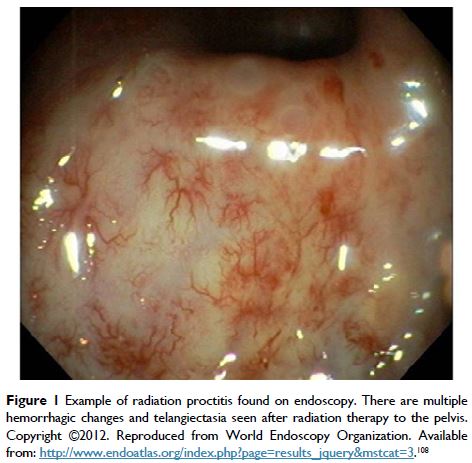9 5 3 6 3
论文已发表
注册即可获取德孚的最新动态
IF 收录期刊
- 3.3 Breast Cancer (Dove Med Press)
- 3.4 Clin Epidemiol
- 2.5 Cancer Manag Res
- 2.9 Infect Drug Resist
- 3.5 Clin Interv Aging
- 4.7 Drug Des Dev Ther
- 2.7 Int J Chronic Obstr
- 6.6 Int J Nanomed
- 2.5 Int J Women's Health
- 2.5 Neuropsych Dis Treat
- 2.7 OncoTargets Ther
- 2.0 Patient Prefer Adher
- 2.3 Ther Clin Risk Manag
- 2.5 J Pain Res
- 2.8 Diabet Metab Synd Ob
- 2.8 Psychol Res Behav Ma
- 3.0 Nat Sci Sleep
- 1.8 Pharmgenomics Pers Med
- 2.7 Risk Manag Healthc Policy
- 4.2 J Inflamm Res
- 2.1 Int J Gen Med
- 4.2 J Hepatocell Carcinoma
- 3.7 J Asthma Allergy
- 1.9 Clin Cosmet Investig Dermatol
- 2.7 J Multidiscip Healthc

Reducing rectal injury in men receiving prostate cancer radiation therapy: current perspectives
Authors Serrano NA, Kalman NS, Anscher MS
Received 6 May 2017
Accepted for publication 29 June 2017
Published 28 July 2017 Volume 2017:9 Pages 339—350
DOI https://doi.org/10.2147/CMAR.S118781
Checked for plagiarism Yes
Review by Single-blind
Peer reviewers approved by Dr Colin Mak
Peer reviewer comments 2
Editor who approved publication: Professor Kenan Onel
Abstract: Dose escalation is now the standard of care for the treatment of
prostate cancer with radiation therapy. However, the rectum tends to be the
dose-limiting structure when treating prostate cancer, given its close proximity.
Early and late toxicities can occur when the rectum receives large doses of
radiation therapy. New technologies allow for prevention of these toxicities.
In this review, we examine the evidence that supports various dose constraints
employed to prevent these rectal injuries from occurring. We also examine the
use of intensity-modulated radiation therapy and how this compares to older
radiation therapy techniques that allow for further sparing of the rectum
during a radiation therapy course. We then review the literature on endorectal
balloons and the effects of their daily use throughout a radiation therapy
course. Tissue spacers are now being investigated in greater detail; these
devices are injected into the rectoprostatic fascia to physically increase the
distance between the prostate and the anterior rectal wall. Last, we review the
use of systemic drugs, specifically statin medications and antihypertensives,
as well as their impact on rectal toxicity.
Keywords: rectal
toxicity, radiation therapy, prostate, prevention
